Clancy Tucker's Blog, page 222
May 17, 2016
18 May 2016 - SCOTT KELLY - A YEAR IN SPACE
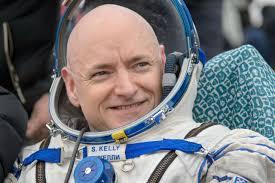
SCOTT KELLY - A YEAR IN SPACE -
G'day folks,
Scott Joseph Kelly is a engineer, retired American astronaut, and a retired U.S. Navy Captain. A veteran of four space flights, Kelly commanded the International Space Station on Expeditions 26, 44, and 45.
After nearly a year aboard the International Space Station, NASA astronaut Scott Kelly returned home to a hero’s welcome. As he readjusts to life on Earth—and undergoes countless medical tests—explore some fascinating facts about his record-breaking trip.
1. He saw numerous sunrises and sunsets each day.
Cruising along at over 17,000 miles per hour, the International Space Station circumnavigates Earth once every 90 minutes. Kelly and his Russian counterpart Mikhail Kornienko therefore had the opportunity to witness an astounding 10,944 sunrises and sunsets over the course of their 340-day mission. All told, they each traveled some 144 million miles, or just about the average distance between Earth and Mars.
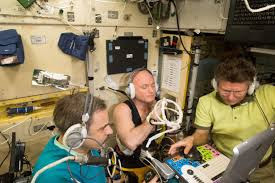
2. Kelly grew noticeably taller.
Spinal discs expand without gravity pushing them down, meaning astronauts can actually grow taller during their time in space. Kelly, for example, gained 1.5 inches. But, alas, he shrank back to his normal size almost immediately after touching down in Kazakhstan on March 1. Thanks to something called the time dilation effect (which Albert Einstein predicted in his theory of relativity), Kelly also returned to Earth 0.01 seconds younger than he otherwise would have been.
3. Since coming back, he’s experienced full-body discomfort.
Despite constantly exercising aboard the International Space Station—he ran about 650 miles on the treadmill alone—Kelly suffered the unavoidable ill effects of cramped living conditions and extremely low gravity. In addition to complaining of extreme muscle soreness and fatigue, Kelly told reporters Friday that his skin burned every time he sat or walked since returning to Earth, and that he couldn’t make a single shot playing basketball. “It seemed like I lived there forever,” Kelly said. Yet he also maintained that he could have stayed longer and that even a two-and-a-half year round trip to Mars is “doable.”
4. He didn’t shower for the entire mission.
Since the International Space Station lacks running water, Kelly was unable to shower for 340 straight days, a streak he finally broke on his way back from Kazakhstan to the United States. Perhaps unsurprisingly, he leapt into his swimming pool fully clothed the moment he returned home on March 3. “You want to get that water around you,” Kelly told reporters. “We make due with not having a shower onboard, and it’s not like you feel dirty, but you definitely feel like you would like to jump in a pool. So I did.”
5. Kelly stayed up-to-date with current events.
The lack of a shower notwithstanding, Kelly had access to many of the same entertainment options as his fellow Americans on Earth. In his spare time, he said he watched TV shows and movies, talked on the phone, snapped photographs, sent out emails and posted constant updates to his followers on Twitter, Facebook and Instagram. Most of all, he intently followed the news, which he said remained on virtually the entire time in orbit. In fact, as soon as he exited the landing capsule on March 1, Kelly asked who had won the Super Tuesday presidential primaries.
6. Kelly may have his next vacation planned out.
Among Earth’s many beautiful locations, Kelly singled out the waters of the Bahamas as appearing “just striking” from space. Yet he expressed the most interest in visiting a group of differently colored lakes that dot the northeastern side of the Himalayas. Now, he said, he just has “to look into what these lakes are called and what country actually owns them.”
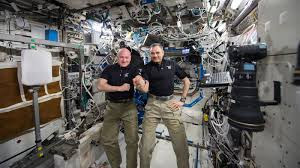
7. Kelly lamented humankind’s destructive impact.
From space, Kelly said he could see “large swaths of pollution” hovering over Earth, particularly in Asia, as well as weather systems in areas you wouldn’t expect to find them. Moreover, “you just notice how thin the atmosphere is, how fragile it looks,” he said. “It makes you more of an environmentalist after so much time looking down at our planet.”
8. He is being studied in conjuncture with his twin.
To learn more about the effects of long-term spaceflight, Kelly’s organs, bones, DNA, stomach microbes and state of mind are being compared to those of his identical twin brother, Mark, a former astronaut. The two will continue to be poked and prodded for up to an additional year, after which the results will come in. So far, Kelly hasn’t noticed any obvious changes (other than his temporary bump in height and slightly impaired vision). “He’s got a better tan,” Kelly quipped. “I think it’s because he plays too much golf and has too much time on his hands.”
9. The twins study is being conducted with Mars in mind.
NASA says that the so-called twins study, as well as other research performed aboard the International Space Station, will help it reach its goal of sending a manned spacecraft to Mars by the 2030s. “We are going to go to Mars—there’s no doubt about that,” White House science advisor John Holdren told Kelly following his return to the United States. “We are committed to it. We are going to get it done, and you really have established the latest milestone on that very challenging pathway.”
10. His first food back was a fitting choice.
During one of his last few days in space, Kelly posted a video of himself in a gorilla suit chasing around another astronaut. “Needed a little humor,” he tweeted at the time. The joke got new life on Friday, when Kelly revealed that a banana was the first thing he ate back on Earth. “It looked so good,” Kelly said, adding that he only recognized the irony of his choice after finishing half of it.
11. Kelly now holds two NASA records.
Over the course of four missions, Kelly has now spent 520 days in space, more than any other NASA astronaut (the worldwide record is 879 days, held by Russian cosmonaut Gennady Padalka). Kelly also holds the NASA record for most consecutive days in space (the worldwide record is 438 days, held by Russian cosmonaut Valeri Polyakov). Kelly said he hopes both are broken soon. “Pushing the envelope,” he said, “is what makes our society progress.”

Clancy's comment: Mm ... Better him than me.

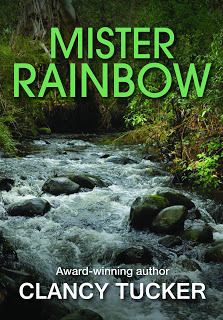
A great 5-Star ***** review of 'Mister Rainbow' from Vicki Case, one of Australia's top poets: Captivating story of youth; adventure & courage 17 May 2016
By Vicki CASE - Published on Amazon.com
Format: Kindle Edition
Award-winning Australian author; Clancy Tucker; has done it yet again with Mister Rainbow. Clancy captures the essence of Australia & Australians beautifully in this book.
Toby & Maddie are two young kids growing up in an Australian country town. Their days are spent together enjoying all the beauty & serenity their environment has to offer.
Then their paradise comes crashing down; people become sick & some die. Fish in the river die in the hundreds. Everyone is in a quandary to understand why. Then; whilst his friend Maddie is ill; Toby stumbles on the cause. Unscrupulous people are pumping toxic waste into the river. The town reservoir is polluted; together with the river & wildlife.
Toby; who is initially disbelieved; seeks help from people he has met along the way & finds it.
Mister Rainbow captivated me from the very beginning & my intrigue was held until the very end. I didn't want to put this book down; desperate to see where it; and these young kids; would take me next.
Purchase Mister Rainbow today and enjoy this incredible story. I highly recommend Mister Rainbow to people of all ages.
I'm ...


Published on May 17, 2016 16:14
May 16, 2016
17 May 2016 - CLANCY TUCKER PHOTOGRAPHY - FACES
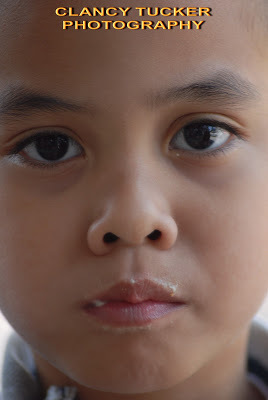
CLANCY TUCKER PHOTOGRAPHY- FACES -
G'day folks,
Welcome to another group of photographs that I took recently. Today, I feature faces. The gorgeous young boy above was taken in Bangkok, but he comes from Indonesia. I saw his dad walking along with his three kids and asked if I could take their picture. The father asked the kids if it was okay. What did the three kids do? They stood beside me and gave me a cuddle, thinking that their dad was taking a snap of me and the three kids. That was a great moment. Anyway ...





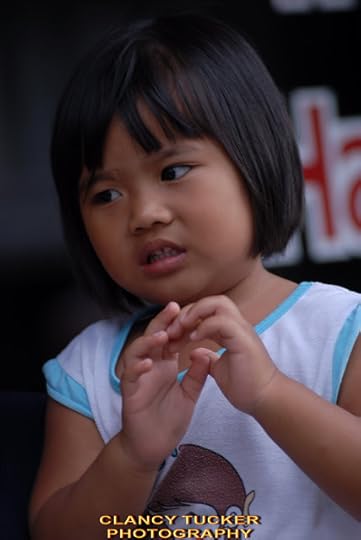

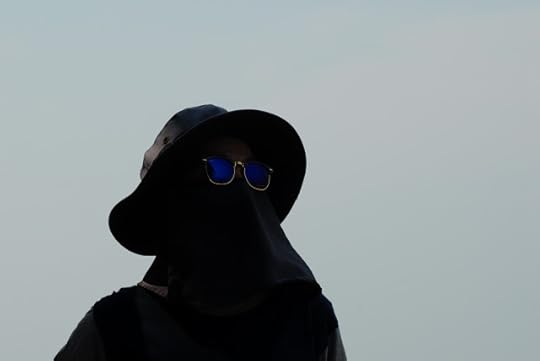



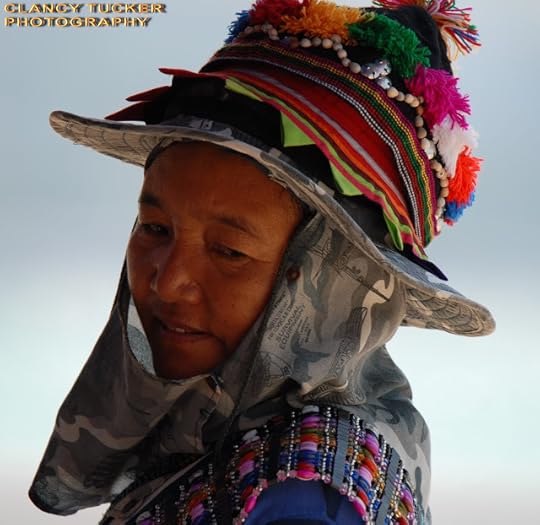
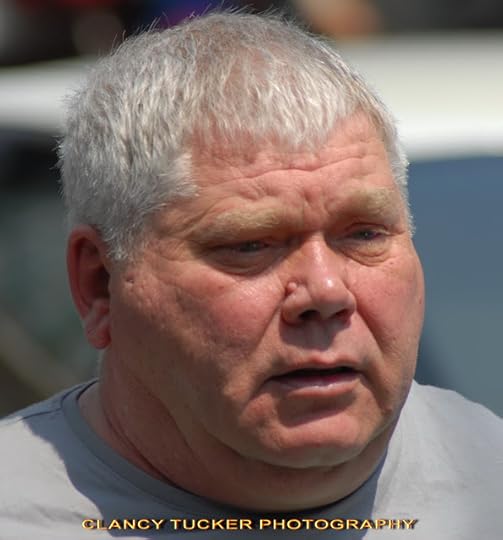



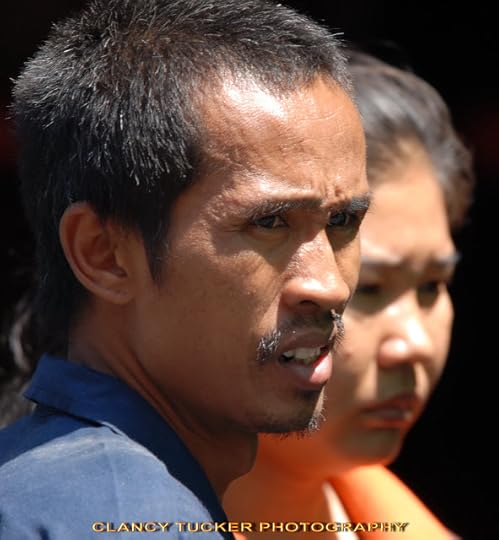


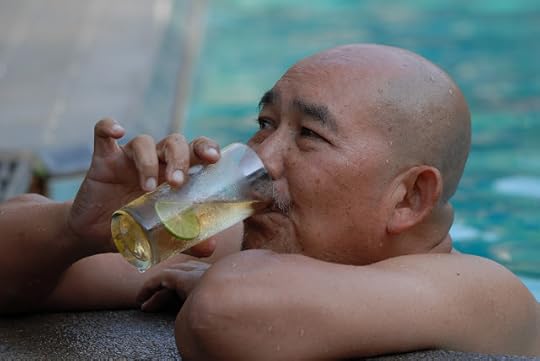
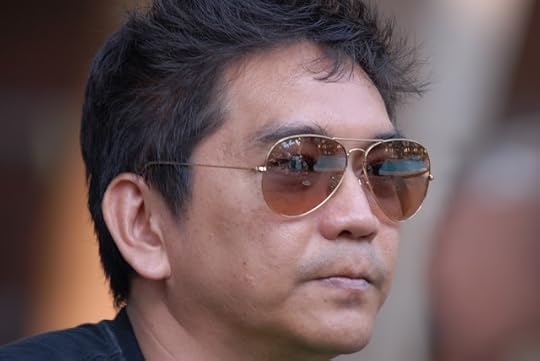
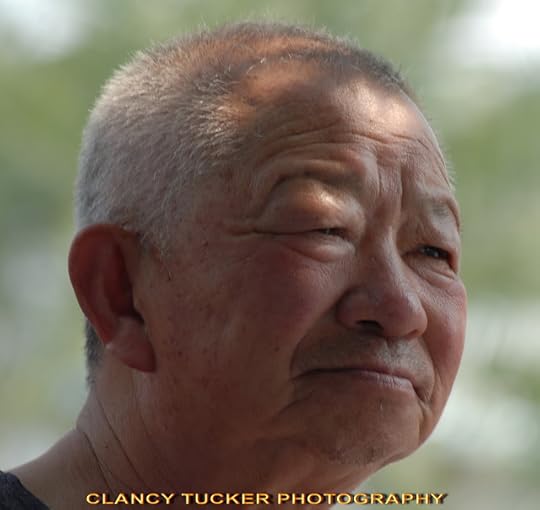

Clancy's comment: There ya go. Looking at faces through a camera lense is startling, and very personal. You can feel and see their angst, their happiness, their worry, and feel their pain.
I'm ...
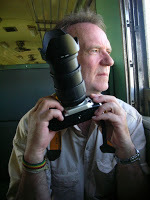

Published on May 16, 2016 15:11
May 15, 2016
16 May 2016 - EDMUND KEMPER
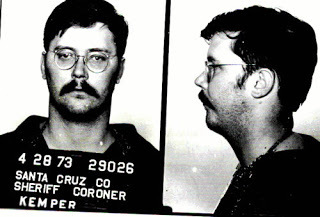
EDMUND KEMPER
G'day folks,
Edmund Emil Kemper III, also known as The Co-ed Butcher or The Co-ed Killer, is an American serial killer, rapist, necrophile and cannibal who abducted and murdered several women in the early 1970s. Serial killer Edmund Kemper killed six young women in the Santa Cruz, California, area and several members of his family.
Born on December 18, 1948, in Burbank, California, Edmund Kemper, at age 15, killed both his grandparents to "see what it felt like." Upon release, he drifted, picking up and releasing female hitchhikers. But he soon stopped letting them go, killing six young women in the Santa Cruz, California, area in the 1970s. In 1973 he killed his mother and her friend before turning himself in.
Edmund Kemper was born on December 18, 1948, in Burbank, California, the middle child of E. E. and Clarnell Kemper. After his parents’ divorce in 1957, he moved with his mother and two sisters to Montana. Kemper had a difficult relationship with his alcoholic mother, as she was very critical of him, and he blamed her for all of his problems. When he was 10 years old, she forced him to live in the basement, away from his sisters, whom she feared he might harm in some way.
Signs of trouble began to emerge early. Kemper had a dark fantasy life, sometimes dreaming about killing his mother. He cut off the heads of his sisters' dolls and even coerced the girls into playing a game he called "gas chamber," in which he had them blindfold him and lead him to a chair, where he pretended to writhe in agony until he "died." At the age of 13, Kemper killed his cat with a knife. He went to live with his father for a time, but ended up back with his mother, who decided to send the troubled teenager to live with his paternal grandparents in North Fork, California.
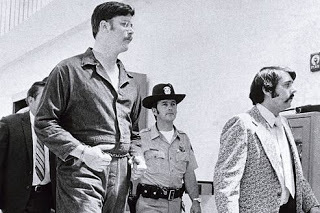
Grandparents' Murder
Kemper hated living on his grandparents' farm. Before going to North Fork, he had already begun learning about firearms, but his grandparents took away his rifle after he killed several birds and other small animals. On August 27, 1964, Kemper finally turned his building rage on his grandparents. The 15-year-old shot his grandmother in the kitchen after an argument, and when his grandfather returned home, Kemper went outside and shot him by his car and then hid the body.
Afterward, he called his mother, who told him to call the police and tell them what happened. Later, Kemper would say that he shot his grandmother "to see what it felt like." He added that he had killed his grandfather so that the man wouldn't have to find out that his wife had been murdered. For his crimes, Kemper was handed over to the California Youth Authority. He underwent a variety of tests, which determined that he had a very high IQ, but also suffered from paranoid schizophrenia. Kemper was eventually sent to Atascadero State Hospital, a maximum security facility for mentally ill convicts.
Release
In 1969, Kemper was released at the age of 21. Despite his prison doctors' recommendation that he not live with his mother, because of her past abuse and his psychological issues involving her, he rejoined her in Santa Cruz, California, where she had moved after ending her third marriage to take a job with the University of California. While there, Kemper attended community college for a time and worked a variety of jobs, eventually finding employment with the Department of Transportation in 1971.
Kemper had applied to become a state trooper, but he was rejected because of his size—he weighed around 300 pounds and was 6 feet 9 inches tall, which led to his nickname “Big Ed.” However, he did hang around some of the Santa Cruz police officers. One gave him a training-school badge and handcuffs, while another let him borrow a gun, according to Whoever Fights Monsters by Robert K. Ressler and Tom Shachtman. Kemper even had a car that resembled a police cruiser.
The same year he began working for the highway department, Kemper was hit by a car while out on his motorcycle. His arm was badly injured, and he received a $15,000 settlement in the civil suit he filed against the car’s driver. Unable to work, Kemper turned his mind toward other pursuits. He noticed a large number of young women hitchhiking in the area. In the new car he bought with some of his settlement money, Kemper began storing the tools he thought he might need to fulfill his murderous desires, including a gun, a knife and handcuffs.
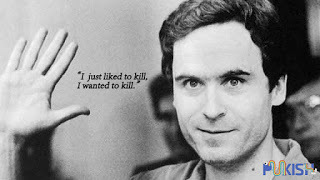
The Co-ed Killer
At first, Kemper picked up female hitchhikers and let them go. However, when he offered a ride to two Fresno State students—Mary Ann Pesce and Anita Luchessa—they would never make it to their destination. Their families reported them missing soon thereafter, but nothing would be known of their fates until August 15, when a female head was discovered in the woods near Santa Cruz and was later identified as Pesce’s. Luchessa’s remains, however, were never found. Kemper would later explain that he stabbed and strangled Pesce before stabbing Luchessa as well. After the murders, he brought the bodies back to his apartment and removed their heads and hands. Kemper also reportedly engaged in sexual activity with their corpses.
Later that year, on September 14, 1972, Kemper picked up 15 year-old Aiko Koo, who had decided to hitchhike rather than wait for the bus to take her to a dance class. She would meet the same fate as Kemper and Luchessa.
In January 1973, Kemper continued to act on his murderous impulses, picking up hitchhiker Cindy Schall, whom he shot and killed. While his mother was out, Kemper went to her home and hid Schall’s body in his room. He dismembered her corpse there the following day and threw the parts into the ocean. Several parts were later discovered when they washed up on shore. He buried her head in his mother's backyard.
On February 5, 1973, Kemper used a campus parking sticker his mother had given him to facilitate a double-murder. He drove to the university, where he offered a ride to two students, Rosalind Thorpe and Alice Liu. Shortly after picking them up, he shot the two young women then drove past the campus security at the gates with the two mortally wounded women in his car. After the murders, Kemper decapitated his two victims and further dismembered the bodies, removed the bullets from their heads and disposed of their parts in different locations. In March, some of Thorpe’s and Liu’s remains were discovered by hikers near Highway 1 in San Mateo County.
At the time of Kemper's murders, two other serial killers, John Linley Frazier and Herbert Mullins, were also perpetrating their own crimes in the area, resulting in Santa Cruz receiving the ignominious nickname the “Murder Capital of the World” in the press. For Kemper's part, he was dubbed the “Co-ed Killer” and the “Co-ed Butcher.”
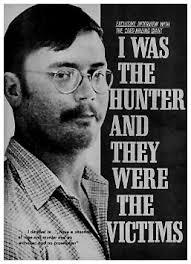
Mother's Murder
In April 1973, Kemper committed what would be his last two murders. On Good Friday, he went to his mother’s home, where the two had an unpleasant exchange. Kemper attacked his mother after she went to sleep, first striking her in the head with a hammer, and then cutting her throat with a knife. As he had with his other victims, he then decapitated her and cut off her hands, but then also removed her larynx and put it down the garbage disposal.
After hiding his mother's body parts, Kemper called his mother’s, friend Sally Hallett and invited her over to the house. Kemper strangled Hallett shortly after she arrived and hid her body in a closet.
Kemper fled the area the next day, driving east until he reached Pueblo, Colorado, where on April 23 he made a call to the Santa Cruz police to confess his crimes. At first, they did not believe that the guy they knew as “Big Ed” was a killer. But during subsequent interrogations he would lead them to all the evidence they needed to prove that he was in fact the infamous "Co-ed Killer."
Trial and Imprisonment
Charged with eight counts of first-degree murder, Kemper went on trial for his crimes in October 1973. He was found guilty of all of the charges in early November. When asked by the judge what he thought his punishment should be, Kemper said that he should be tortured to death. He instead received eight concurrent life sentences. At present, Kemper is serving his time at California Medical Facility in Vacaville.

Clancy's comment: Mm ... Speechless.
I'm ...

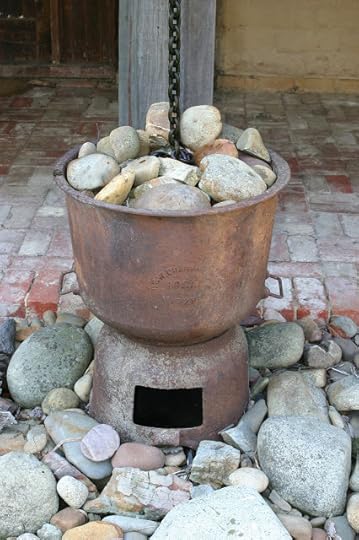
Published on May 15, 2016 16:57
May 14, 2016
15 May 2016 - BRITISH SLANG

BRITISH SLANG
G'day folks,
Going to the UK? If so, read this so you can understand what people are saying.
On the job - If you are on the job, it could mean that you are hard at work, or having sex. Usually the context helps you decide which it is!
On the piss - If you are out on the piss, it means you are out to get drunk, or to get pissed.
On your bike - A very polite way of telling someone to f*** off.
One off - A one off is a specialor a one time event that is never to be repeated. Like writing this book!
Owt - This is Yorkshire for anything. Similarly nowt is Yorkshire for nothing. Hence the expression "you don't get owt for nowt". Roughly translated as "you never get anything for nothing" or "there's no such thing as a free lunch".
Pants - This is quite a new expression - I have no idea where it came from. Anyway, it is now quite trendy to say that something which is total crap is "pants". For instance you could say the last episode of a TV show was "total pants".
Pardon me - This is very amusing for Brits in America. Most kids are taught to say "pardon me" if they fart in public or at the table etc. In America it has other meanings which take us Brits a while to figure out. I thought I was surrounded by people with flatulence problems!

Parky - Either short for Michael Parkinson, a famous chat show host, or more likely a word to describe the weather as being rather cold!
Pass - This means I don't knowand comes from the old TV show, Mastermind, where contestants were made to say "pass" if they did not know the answer to the question.
Pavement pizza - Well here the pavement is the sidewalk and a pavement pizza is a descriptive way of saying vomit. Often found outside Indian restaurants early on a Sunday morning.
Peanuts - I hated one of my summer jobs as a kid because it paid peanuts. The full expression is that if you pay peanuts, you get monkeys. It is a fairly derogatory way of saying that manual labour doesn't need to be bright and doesn't need a lot of pay. Typically these days peanuts means something is cheap. For example we would say the petrolin the USA is peanuts or costs peanuts. Compared to our prices it is.
Pear shaped - If something has gone pear shaped it means it has become a disaster. It might be preparing a dinner party or arranging a meeting, any of these things can go completely pear shaped.
Piece of cake - I remember saying it's a piece of cake in front of one of my American friends, who then started looking around for the cake! It means it's a cinch!
Pinch - This means to stealsomething. Though when you say "steal" it is a bit more serious than pinch. A kid might pinch a cake from the kitchen. A thief would steal something during a burglary.
Pip pip - Another out-dated expression meaning goodbye. Not used any more.
Piss poor - If something is described as being "piss poor" it means it is an extremely poor attempt at something.
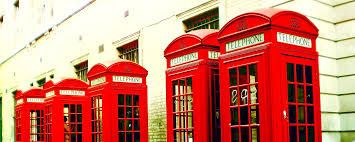
Piss up - A piss up is a drinking session. A visit to the pub. There is an English expression to describe someone as disorganised which says that he/she could not organise a piss up in a brewery!
Pissed - This is a great one for misunderstanding. Most people go to the pub to get pissed. In fact the object of a stag night is to get as pissed as possible. Getting pissed means getting drunk. It does not mean getting angry. That would be getting pissed off!
Pissing around - Fooling about, in the sense of messing around or making fun or just being silly. Not terribly polite.
Plastered - Another word for loaded. In other words you have had rather too much to drink down your local. It has nothing to do with being covered with plaster though anything is possible when you are plastered.
Porkies - More cockney rhyming slang. Short for "porky pies", meaning "pork pies". Rhymes with lies. My Mum always used to tell me I was telling porkies! And she was right!
Porridge - Doing porridge means to serve time in prison. There was also a comedy TV series called Porridge about a prisoner starring Ronnie Barker of The Two Ronnies fame.

Clancy's comment: There ya go. Pip pip, folks.
I'm ...
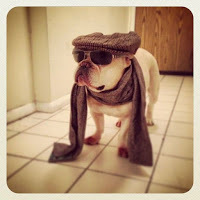
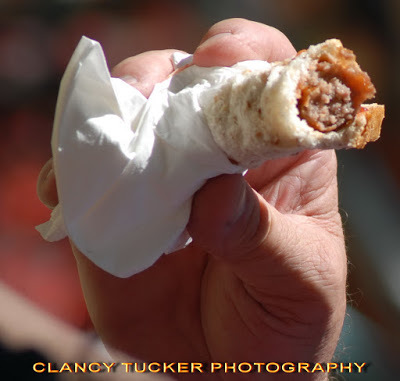
Published on May 14, 2016 16:36
May 13, 2016
14 May 2016 - DALAI LAMA WISDOM

DALAI LAMA WISDOM
G'day folks,
Here is a man who loves to keep it simple. The 14th Dalai Lama /ˈdɑːlaɪ ˈlɑːmə/, /ˌdælaɪ ˈlɑːmə/ is the current Dalai Lama. Dalai Lamas are important monks of the Gelug school, the newest school of Tibetan Buddhism which is nominally headed by the Ganden Tripas.
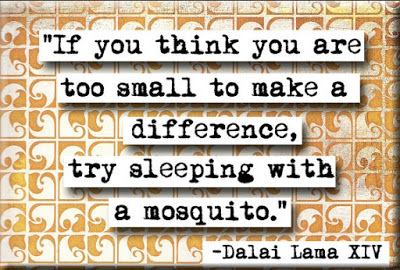

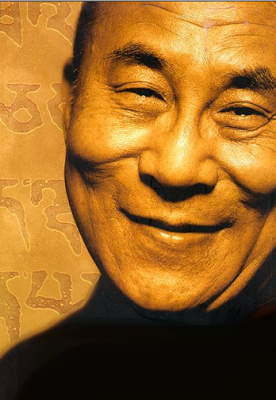




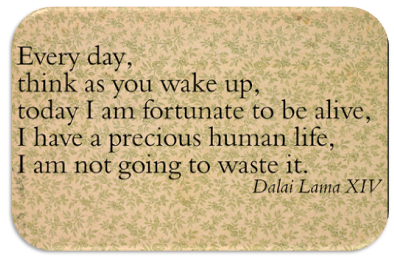



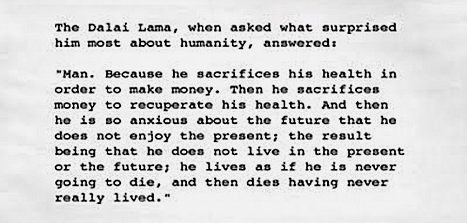
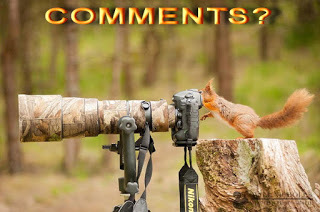
Clancy's comment: I love his giggle.
I'm ...


Published on May 13, 2016 15:40
May 12, 2016
13 May 2016 - WEIRD STUFF

WEIRD STUFF
G'day folks,
Time to look at some weird stuff to make you smile.

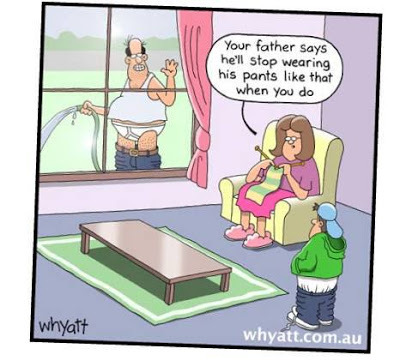

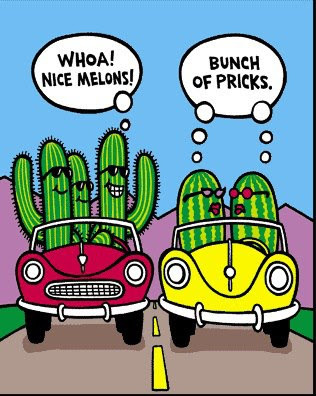



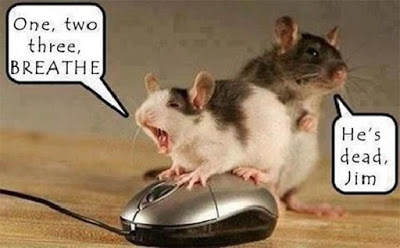
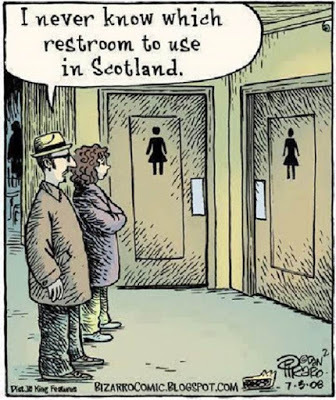
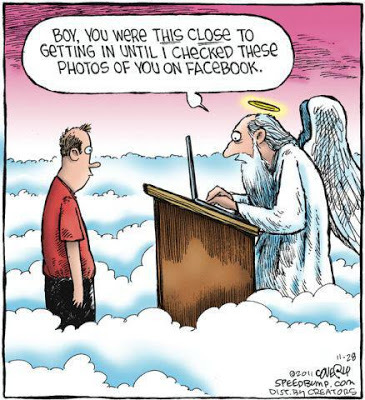

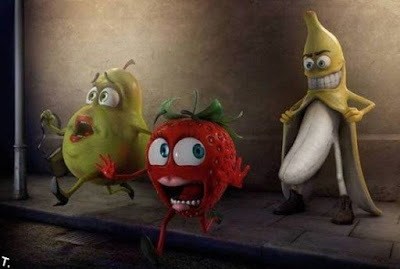
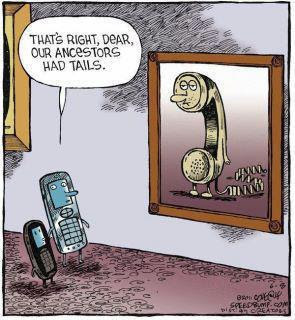
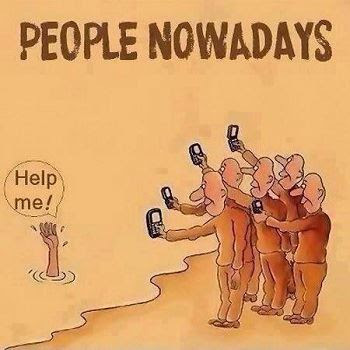
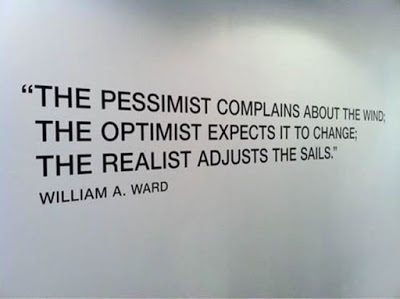

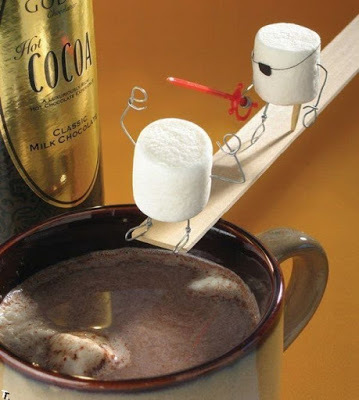

Clancy' comment: Loved the banana flasher. Keep smiling, folks.
I'm ...


Published on May 12, 2016 03:44
May 11, 2016
12 May 2016 - MARGARET THATCHER WISDOM

MARGARET THATCHER WISDOM
G'day folks,
Margaret Hilda Thatcher, Baroness Thatcher, LG, OM, PC, FRS was a British stateswoman and politician who was the Prime Minister of the United Kingdom from 1979 to 1990 and the Leader of the Conservative Party from 1975 to 1990.
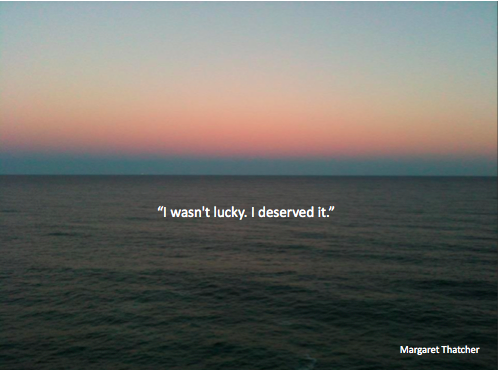
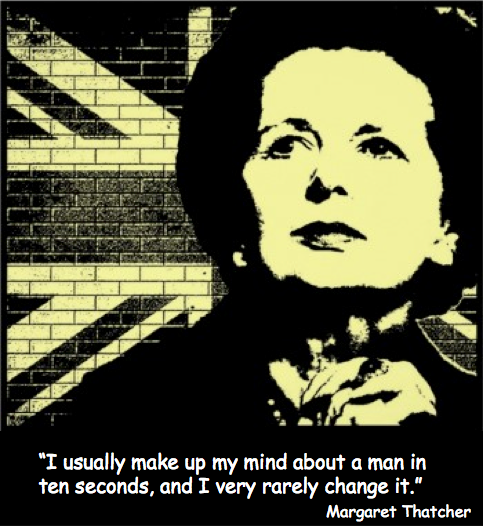
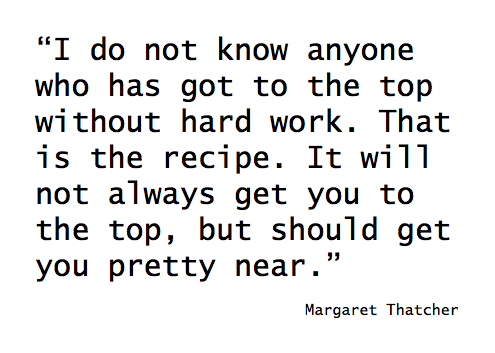
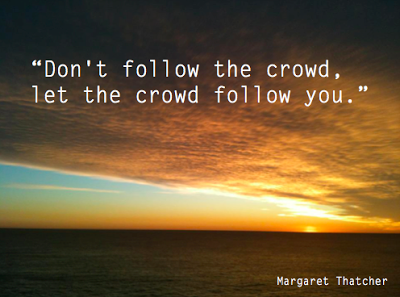
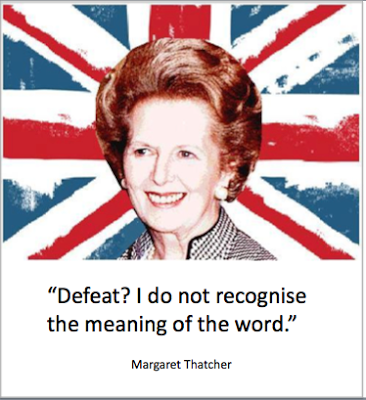
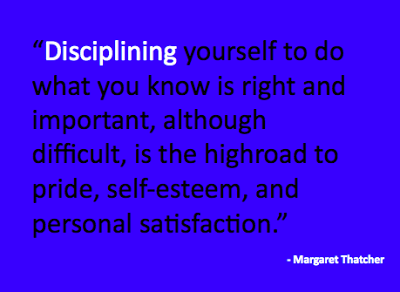
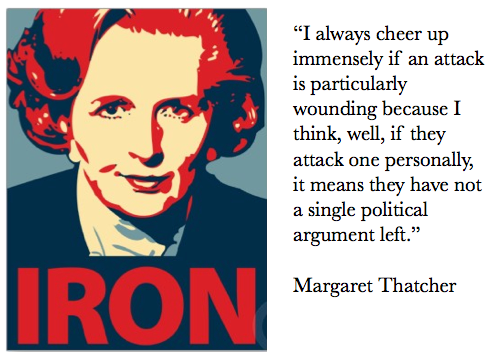
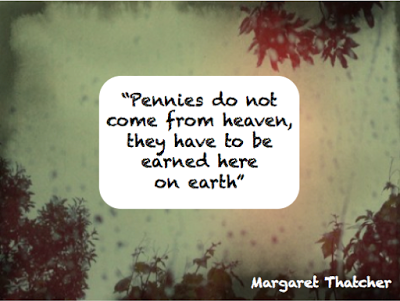





Clancy's comment: A smart woman, and a clever politician.
I'm ...
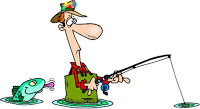
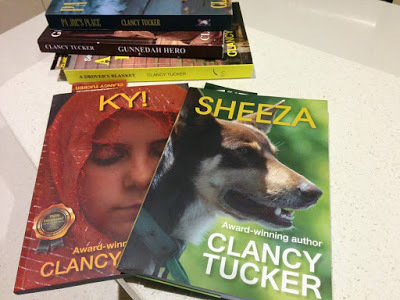
Published on May 11, 2016 16:20
May 10, 2016
11 May 2016 - THE HEART SYMBOL

THE HEART SYMBOL
G'day folks,
Do you know how the heart symbol came into being?
The heart shape is recognized the world over as a symbol of romantic love and affection, but its historical origins are difficult to pin down. Some believe the iconic pictogram is derived from the shape of ivy leaves, which are associated with fidelity, while others contend it was modeled after breasts, buttocks or other parts of the human anatomy. Perhaps the most unusual theory concerns silphium, a species of giant fennel that once grew on the North African coastline near the Greek colony of Cyrene.

The ancient Greeks and Romans used silphium as both a food flavoring and a medicine—it supposedly worked wonders as a cough syrup—but it was most famous as an early form of birth control. Ancient writers and poets hailed the plant for its contraceptive powers, and it became so popular that it was cultivated into extinction by the first century A.D. (legend has it that the Roman Emperor Nero was presented with the last surviving stalk). Silphium’s seedpod bore a striking resemblance to the modern Valentine’s heart, leading many to speculate that the herb’s associations with love and sex may have been what first helped popularize the symbol. The ancient city of Cyrene, which grew rich from the silphium trade, even put the heart shape on its money.
While the silphium theory is certainly compelling, the true origins of the heart shape may be more straightforward. Scholars such as Pierre Vinken and Martin Kemp have argued that the symbol has its roots in the writings of Galen and the philosopher Aristotle, who described the human heart as having three chambers with a small dent in the middle. According to this theory, the heart shape may have been born when artists and scientists from the Middle Ages attempted to draw representations of ancient medical texts.

In the 14th century, for example, the Italian physicist Guido da Vigevano made a series of anatomical drawings featuring a heart that closely resembles the one described by Aristotle. Since the human heart has long been associated with emotion and pleasure, the shape was eventually co-opted as a symbol of romance and medieval courtly love. It grew especially popular during the Renaissance, when it was used in religious art depicting the Sacred Heart of Christ and as one of the four suits in playing cards. By the 18th and 19th centuries, meanwhile, it had become a recurring motif in love notes and Valentine’s Day cards.

Clancy's comment: There ya go.

ANOTHER TOP REVIEW FOR'KICK-ASS' TYLER
Another fantastic piece of work by Clancy Tucker, ‘Kick-Ass’ Tyler is Book 1 in a series about a gutsy fourteen year-old girl called Sam Tyler. She is smart in mind and mouth, but is still grieving for her father who was killed two years ago. This grief won’t allow her to accept Max, who has filled her dad’s place.
When her school mate Zoran is kidnapped and held to ransom, Sam’s life changes drastically. Sam now needs Max’s help. Her investigation into the missing boy’s life gives her a sense of purpose. It fires her up. The kidnapping gives birth to a new relationship between Sam and Max. The shift in Sam’s character is brilliantly built up.
Together with her friends Neve, Tina and Jason, Sam creates a committee to help the police find Zoran. This leads to their community being brought together by the school children to keep the search alive and vivid in people’s minds, and find the missing boy. The group also discover inside themselves, hidden strengths that give meaning to their life.
Never one to shirk the hard issues, Clancy Tucker has again addressed powerful themes. The main one here is missing children. It is tied to threads on teen suicide, bullying and its lasting effects, domestic violence, grief and loss.
This story is fast-paced and full of mystery and as always, comes with strong messages full of optimism and hope. It is aimed at the 8-80 age group and I can’t wait for Book 2!
Thank you to BuzzWords Magazine, and Anastasia Gonis, one of Australia's top book reviewers.
 BUZZWORDS
BUZZWORDSI'm ...

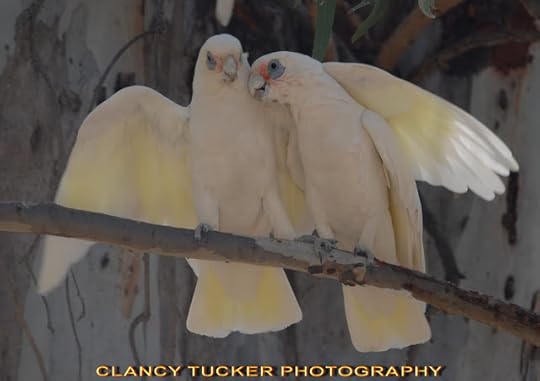
Published on May 10, 2016 15:12
May 9, 2016
10 May 2016 - OUR WAR DOGS
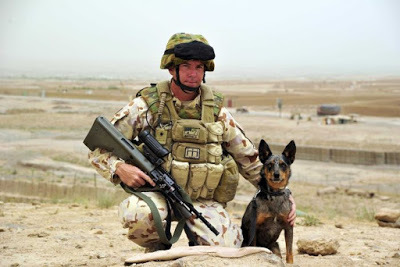
OUR WAR DOGS
G'day folks,
Dogs have been used by the Australian Military since WW1, where they were used as messenger dogs. In WW2 they were also used as messenger dogs, as well as tracker dogs. During the Vietnam War they were used for tracking, Engineer mine & explosive dogs by the army, as well as asset security dogs by the RAAF.

The training of the dogs was carried out at the Infantry Centre in Ingleburn NSW. Eleven of these highly trained dogs were sent to Vietnam where they served from 1967 until 1971. They served for three years, being shared with the different battalions as they rotated through their tours.
A Tracker Team usually consisted of two dogs and their handlers, two cover men; one a machine gunner and one a signaller. When required for duty they would be choppered in and inserted and removed from the jungle by being suspended from the helicopter in a special harness. The dogs enjoyed these chopper trips, loving the fresh air and escaping from the hot and humid conditions below in the jungle.
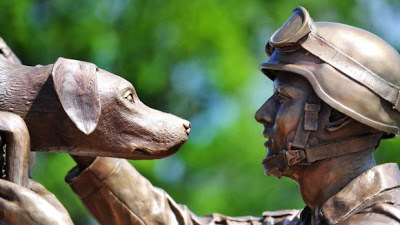
Their service to the troops was invaluable, being able to sense the enemy long before any human could, tracking enemy, hiding or retreating after being wounded. The sad part of this story is that the dogs could not be returned to Australia after their time was up because of Australia's strict quarantine laws, as was the case with the horses which served us so well in the First World War.

Homes were found with European families living in Saigon for 10 out of the 11 dogs left behind. One dog, Cassius died of heat exhaustion after a training run. In 2001 a memorial to these dogs was unveiled at Alexander Headland on Queensland's Sunshine Coast where the dogs names as follows are listed -
Cesear, Janus, Justin, Juno, Marcian, Milo, Trajan, Cassius, Julian, Marcus and Tiber.
These words are also inscribed on the Memorial –
''Down jungle tracks through shot and shell, ears pricked, keen sense of smell; our tracker dogs with care and poise, alert to ambush, foreign noise, never whimper, whine or bark, their service honoured with this plaque, no medals pinned on hairy chest, they stayed behind, they were the best.''


Clancy's comment: Unsung heroes. Love ya work!
I'm ...

Fly over for our military dogs!
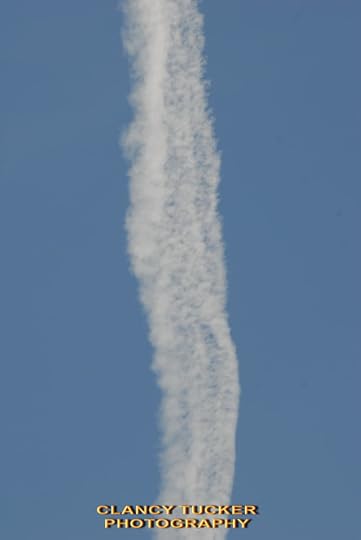
Published on May 09, 2016 15:48
May 8, 2016
9 May 2016 - FUNNY KIDS
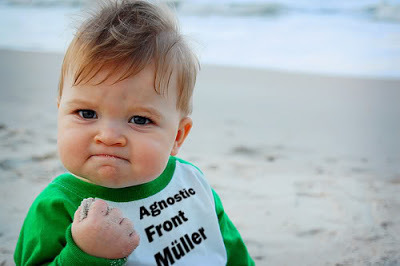
FUNNY KIDS
G'day guys,
You probably already know that kids are my favourite subject to photograph because they are so unpredictable. Check out these pictures.




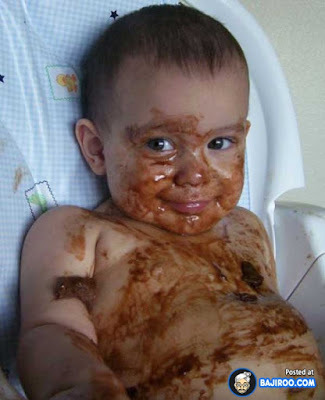
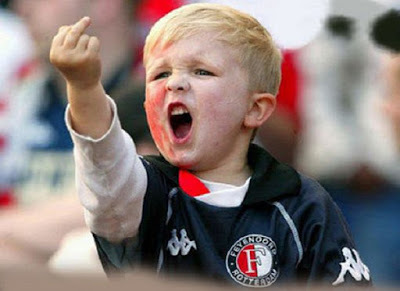







Clancy's comment: Yep, our greatest resource.
I'm ...


Published on May 08, 2016 02:59



